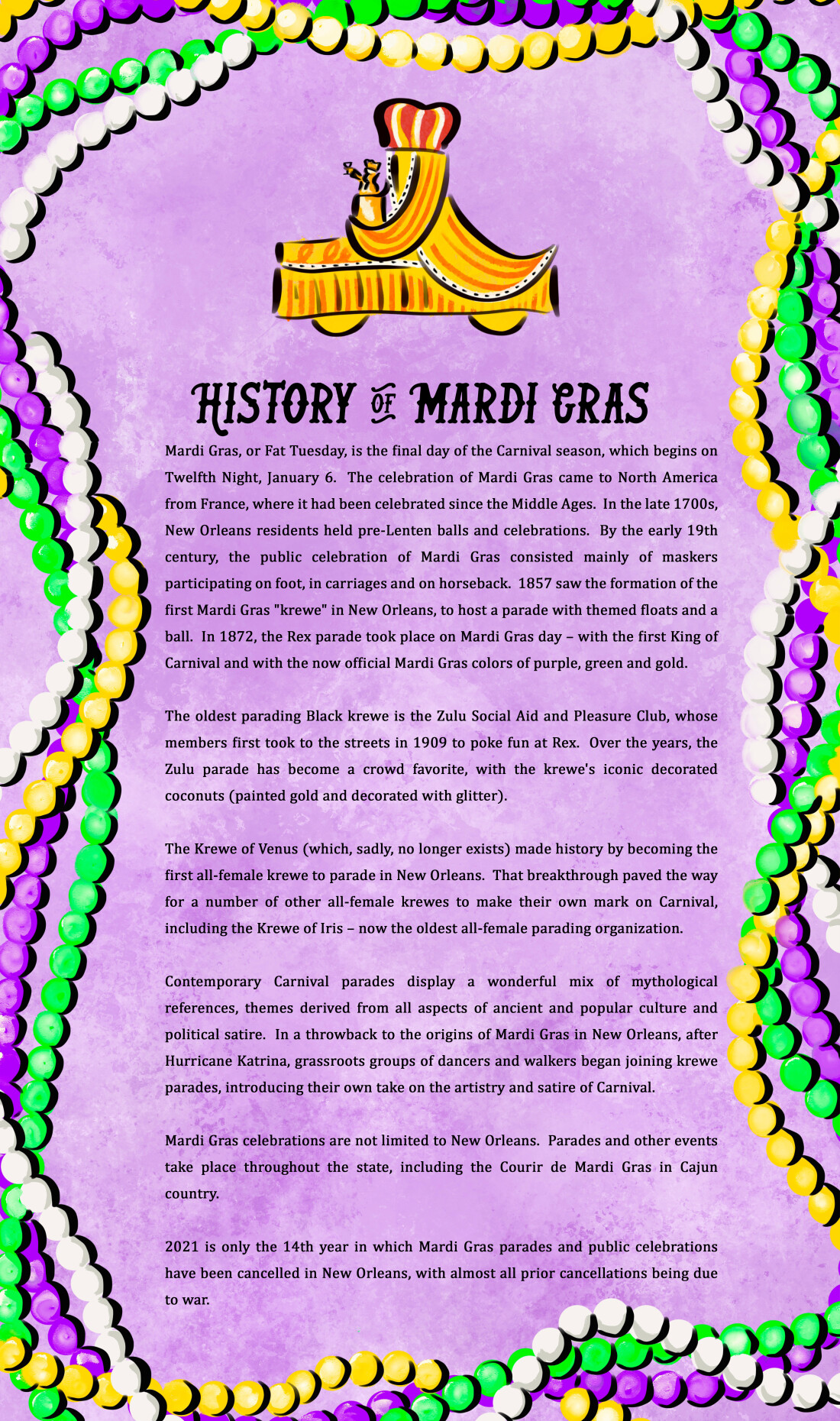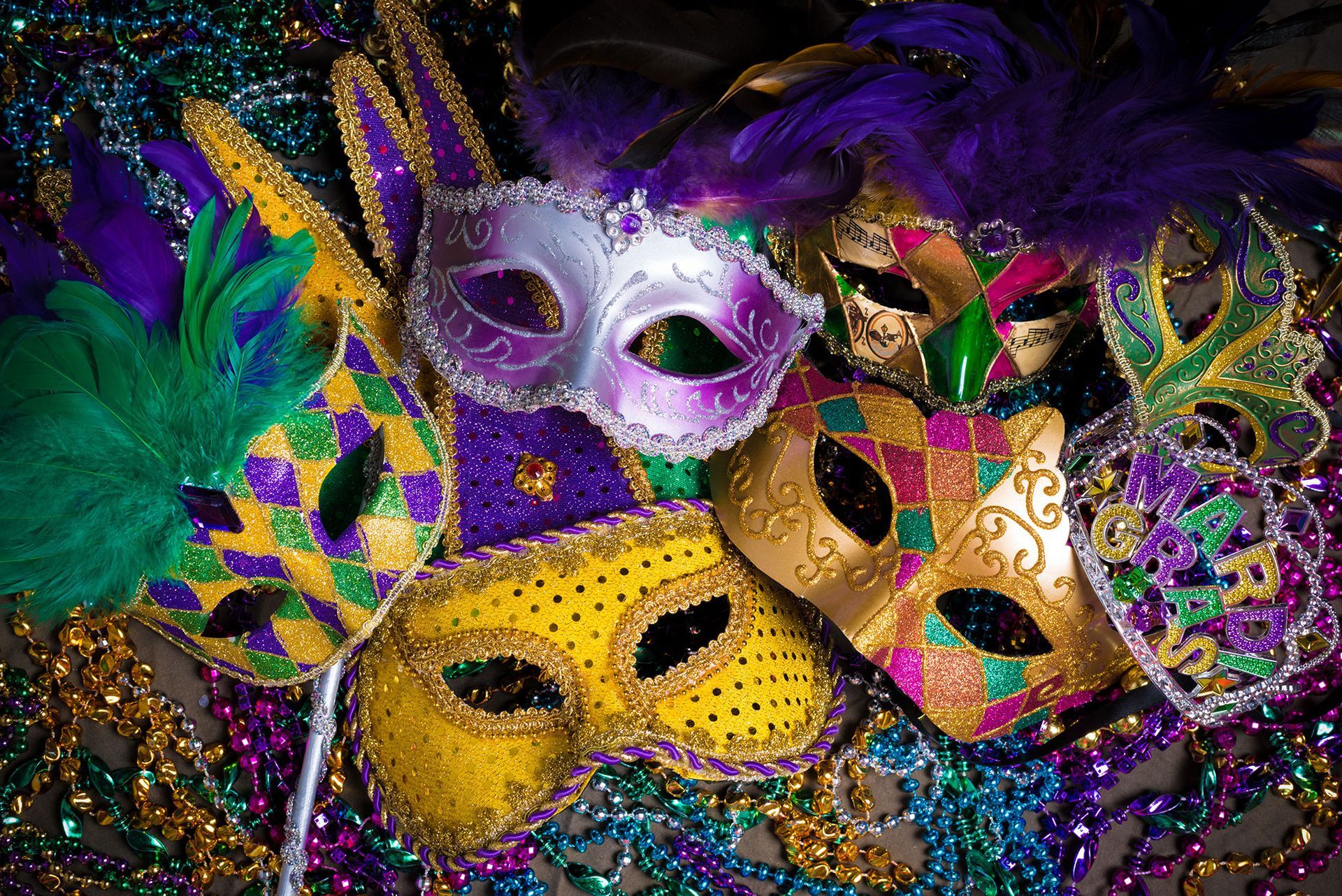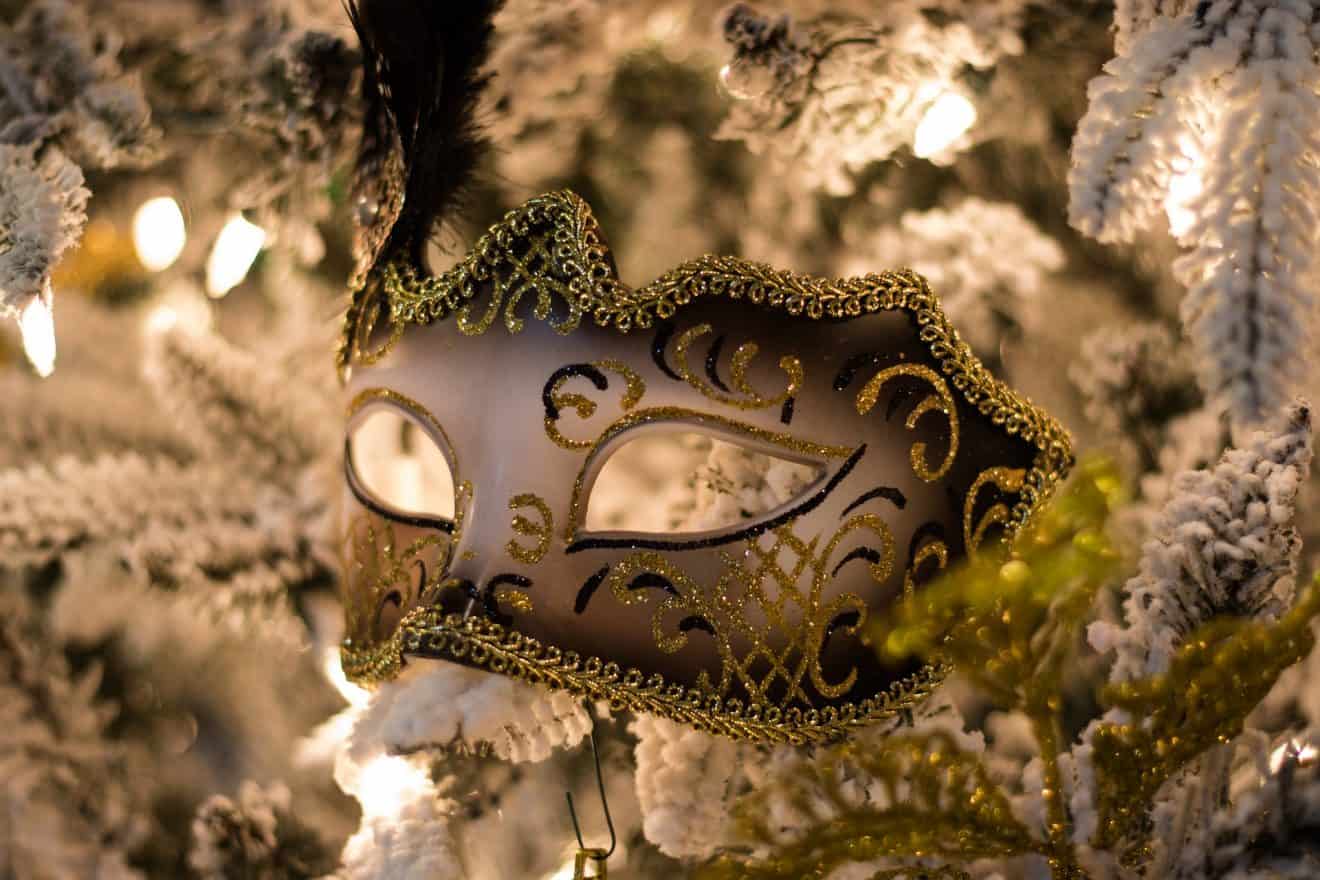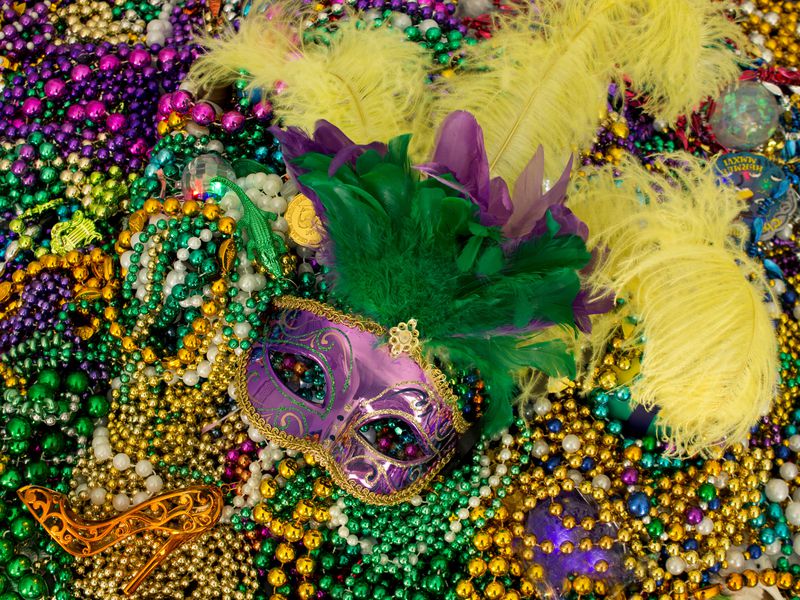Gallery
Photos from events, contest for the best costume, videos from master classes.
 |  |
 |  |
 |  |
 |  |
 |  |
 |  |
Mardi Gras is a Christian holiday and popular cultural phenomenon that dates back thousands of years to pagan spring and fertility rites. It's most famously celebrated with parades in New Orleans Learn about the origin, meaning, symbols, and traditions of Mardi Gras, the Christian feast day that marks the end of Carnival. Discover the history and trivia of king cakes, parades, krewes, beads, and more in this comprehensive guide. Mardi Gras is a festive day celebrated in France on Shrove Tuesday (the Tuesday before Ash Wednesday), which marks the close of the pre-Lenten season. The French name Mardi Gras means Fat Tuesday, from the custom of using all the fats in the home before Lent. 1. Mobile Is The Birthplace Of Mardi Gras. First things first: The beloved tradition was actually born in Mobile, Alabama, though many associate it with New Orleans. Mobile first celebrated Mardi Gras in 1703, with the party really heating up in 1831. Mardi Gras is still a huge event in Mobile, with dozens of balls and parades every year. The History of New Orleans Mardi Gras . Although the date of the first organized celebration of Mardi Gras in New Orleans is debatable, the 1730 account of one Marc-Antoine Caillot (a young clerk sent to Louisiana by the French Company of the Indies) mentions a celebration with music and dance, mask-wearing and costumes—including cross-dressing. Why is Mardi Gras celebrated? Mardi Gras is celebrated in many countries around the world, though mainly in places with large Roman Catholic populations. It's believed that Mardi Gras emerged from the wild ancient Roman festivals of Saturnalia and Lupercalia. These pagan celebrations involved days of feasting, masquerading, dancing, and drinking. On March 2, 1699, French-Canadian explorer Jean Baptiste Le Moyne Sieur de Bienville arrived at a plot of ground 60 miles directly south of New Orleans, and named it "Pointe du Mardi Gras" when his men realized it was the eve of the festive holiday. Bienville also established "Fort Louis de la Louisiane" (which is now Mobile) in 1702. Mardi Gras, also known as Fat Tuesday, has a rich history dating back thousands of years and is celebrated in various forms across the globe, from New Orleans to Venice. Mardi Gras brings communities together, boosts local economies, and showcases vibrant traditions, from colorful parades to unique krewe customs, making it a truly special and Nearly every year (the Covid-19 pandemic years notwithstanding) the city of New Orleans descends in to a chaotic flurry of crowds, colorful masks, and beads galore all in celebration of Mardi Gras. But Mardi Gras history actually extends all the way back to the days before Christianity in Ancient Rome, and has roots in pagan spring festivals. As with most other holidays with a deep heritage, the traditions and customs of Mardi Gras evolved as it moved through countries, continents, and centuries and became the raucous, joy-filled Mardi Gras masks are more than just festive accessories—they carry a rich history and cultural significance. Every detail, Mardi Gras color and design tells a story, and the artists who craft Mardi Gras is more than just a day of parades and parties; it is a deep-rooted tradition with a fascinating history and unique customs. From King Cakes to krewes and colorful beads, this celebration continues to captivate people worldwide. Every year, as winter fades and spring approaches, the streets of New Orleans explode with color, music, and celebration. Mardi Gras, the grandest festival in Louisiana, is famous for its parades, beads, masked revelers, and deep cultural traditions. A Brief History of Mardi Gras. Mardi Gras, or “Fat Tuesday,” marks the final day before the Christian season of Lent begins. Its origins date back thousands of years, to ancient Roman festivals like Saturnalia and Lupercalia, which celebrated fertility, spring, and abundance. The history of Mardi Gras has always been associated with a day of celebrations. The day was formally made a holiday in 1875 when the Mardi Gras Act was signed into law by Governor Warmoth. Louisiana locals may think nothing of it, but being able to celebrate Mardi Gras as a legitimate holiday is a unique privilege. Mardi Gras refers to Fat Tuesday, the final day of revelry before Ash Wednesday, when Lent begins.” Mardi Gras wasn’t referred to as “Carnival” until 1781. New Orleans floats are traditionally known as tableaux cars. Mardi Gras meaning of beads: Mardi Gras “throws” (like beads) started in 1870. The famous New Orleans celebration of Mardi Gras has a rich history. Learn Mardi Gras facts and the origins of the holiday's traditions such as beads, masks, and king cake. In 1870, Mardi Gras' second Krewe, the Twelfth Night Revelers, was formed. This is also the first recorded account of Mardi Gras "throws.". Newspapers began to announce Mardi Gras events in advance, and they even printed "Carnival Edition" lithographs of parades' fantastic float designs (after they rolled, of course - themes and floats were always carefully guarded before the procession). Mardi Gras is French for "Fat Tuesday," and many scholars believe that Mardi Gras has its roots in the ancient pagan ritual of Saturnalia, which celebrated t And that history is far more religious than we usually recognize. Mardi Gras is French for ‘Fat Tuesday.’ Mardi Gras is the final day of the festivities known as Carnival and is celebrated in predominately Catholic locations around the world—most famously in cities such as New Orleans and Rio de Jainaro.
Articles and news, personal stories, interviews with experts.
Photos from events, contest for the best costume, videos from master classes.
 |  |
 |  |
 |  |
 |  |
 |  |
 |  |